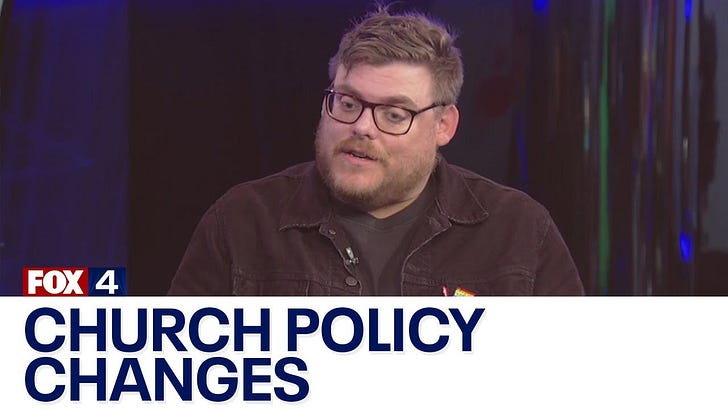Crossroads: What happens next for United Methodists?
The progressive U.S. establishment has spoken, while tensions remain in local pews
No one was surprised when the embattled United Methodist Church — after decades of fighting about the Bible, salvation and sexuality — boldly steered onto a progressive course after the exit of 7,659 congregations in America's biggest church split since the Civil War.
At least, no one should have been surprised.
The only issue was how quickly the UMC establishment would make major changes in doctrines and laws. The key — the focus for this week’s “Crossroads” podcast — is what happens now. The key Associated Press report simply focused on the celebrations by the denomination’s leaders, after embracing same-sex unions and other major changes:
The action marked the final major reversal of a collection of LGBTQ bans and disapprovals that have been embedded throughout the laws and social teachings of the United Methodist Church over the previous half-century.
The 447-233 vote by the UMC’s General Conference came one day after delegates overwhelmingly voted to repeal a 52-year-old declaration that the practice of homosexuality is “incompatible with Christian teaching” and two days after they repealed the denomination’s ban on LGBTQ clergy.
It’s the UMC’s first legislative gathering since 2019, one that featured its most progressive slate of delegates in memory following the departure of more than 7,600 mostly conservative congregations in the United States because it essentially stopped enforcing its bans on same-sex marriage and LGBTQ ordination.
No surprising news there. Delegates also approved a revised Social Principles document defining marriage as a covenant between two adults — period — without a reference to ancient Christian teachings about marriage being between a man and a woman.
Once again, no surprise. However, there were new debates about how to handle debating other issues linked to the Sexual Revolution. The key: What is the status of sexual activity outside of the vows of gay or heterosexual marriage? What about “monogamy”?
Did the mainstream press catch this complicated doctrinal and legal issue? Apparently not. This raised another issue: What is the UMC definition of “adultery” under the revised Book of Discipline and the Social Principles? Did the mainstream coverage catch that complication? Apparently not.
How did the UMC leaders handle these issues? My national “On Religion” column for this week noted:
Efforts to retain language requiring ordinands to be "celibate in singleness" or "faithful in a marriage" failed -- leaving detailed definitions of "immorality" to regional conferences. Also, this statement was removed: "Although all persons are sexual beings whether or not they are married, sexual relations are affirmed only within the covenant of monogamous, heterosexual marriage." Delegates rejected an effort to retain this statement, while simply removing "heterosexual."
The national church instructed leaders at the regional level to begin training local-church laity to prepare to accept future pastors — whatever their sexual and gender identities.
While thousands of churches have left the denomination, many others face divisions in their pews — since UMC rules required a two-thirds majority for congregations to exit while retaining their buildings, endowments, etc. No one believes that the UMC’s struggles are over at the local level, a fact that should matter to local print and broadcast newsrooms.
In addition to local churches, how will the sweeping changes affect United Methodist seminaries, agencies, publishers and affiliated colleges? The denomination’s official news agency has already announced a $346.7 million budget for 2025-2028, a stunning 43% cut from the previous 4-year period.
The column ended with this:
In 1967, total United Methodist membership was 11 million and it is now estimated to be 4.9 million, noted Ryan Burge of Eastern Illinois University, a nationally known expert on trends in American religion. After decades of consistent decline, statistical models had predicted that UMC membership would not fall to 4.9 million until 2038, he noted, in his Graphs about Religion newsletter. …
"It remains to be seen," he added, "if those who didn't leave are now even more committed to the cause of the United Methodist Church, or if there will continue to be fallout from this denominational split."
Enjoy the podcast and, please, pass it along to others.





